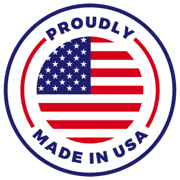
Are you using disinfectant wipes correctly? Last week Andrea did a great job explaining why “reading the fine print”on cleaning products is essential. It’s really the only way to determine if the chemical is the right fit for the job. In my experience as a janitor, it’s also the only way to know that you’re using the product correctly.
I can’t tell you how many times I’ve seen someone pull a disinfecting wipe out of the package, wipe a toilet handle and then immediately flush with their fingertips.
Disinfection Takes Time
In order to disinfect, that toilet handle needs to remain wet on the surface for a certain period of time according to the package “Directions For Use.” In many cases that means using more than one wipe.
Usage information for Clorox Disinfecting Wipes require the surface to stay wet for 4 minutes in order to disinfect. Likewise Lysol Disinfecting Wipes require the surface to stay wet for 4 minutes to truly disinfect, which means you’ll be using more than one wipe. To prevent mold and mildew and their odors using Lysol Disinfecting Wipes, you have to use enough wipes to keep the surface wet for 10 minutes…that’s definitely a multi-wipe job!
Seventh Generation wipes require surfaces to stay wet for 10 minutes to disinfect and deodorize. You need to use as many wipes as it takes to keep the surface wet for a full 10 minutes.
Why is keeping the surface wet so important?
In order for the cleaning product to work as claimed, it needs to stick around on the surface long enough to kill the bacteria or virus. Once the wipe dries, it has no more germ-killing power.
If you’re wondering why the recommended contact times are so different, it’s because the time it takes for a product to kill various bacteria and viruses are different. To make a disinfectant claim, a product has to go through a strict testing process set forth in the U.S. by the Environmental Protection Agency (EPA). To test a disinfectant, scientists at an EPA accredited lab cover a surface with a large dose of the organism being studied. They then douse the surface with the disinfectant and let it sit for a set amount of time before testing to determine whether any of the organisms remain viable.
Those tests are somewhat overkill using a higher number of organisms than are usually on a common surface. However, that said, when someone in the house has been sick–especially with severe gastrointestinal symptoms including vomiting or diarrhea—or when you’re working in the kitchen with raw chicken on counters and cutting boards, you need to pay attention to those kill times.
Multiple Surfaces
Another no-no when using wipes is reusing them on multiple surfaces. Some say that if the wipe is thoroughly wet, there’s still enough cleaner to use on several objects in the room…say a doorknob plus a faucet handle in the bath without spreading organisms around. But every expert agrees you should not use one wipe for multiple rooms.
Been Using Wipes Wrong?
When wipes start to dry, and it doesn’t take long, their effectiveness is drying too.
If you’ve been using wipes wrong, forgive yourself and change your ways! Know the difference between cleaning, sanitizing and disinfecting. According to the EPA, to sanitize means to kill 99.9% of all germs within 30 seconds. The legal definition of disinfecting is to kill 99.999% of germs in 10 minutes. It really is all about the 9s…the more 9s, the better!
If you’d like more information about killing bacteria and viruses or general cleaning information visit DisinfecTips.com.
